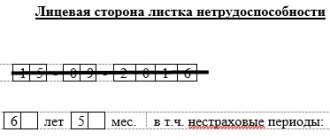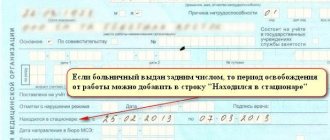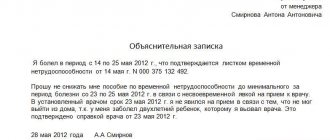Home / Alimony / What should you know about the writ of execution for alimony?
In accordance with family law, a parent can financially help their children on a voluntary basis; for this it is not necessary to go to court. In cases where the former spouse does not want to participate in raising the child and pay alimony, it will not be possible to avoid a lawsuit. As a result of determining the amount of amounts to be paid until the child reaches adulthood, the plaintiff receives a writ of execution. We will talk about what needs to be done with this document later in this article.
Definition by law
In order for the court decision to award payments for the child to take effect, the applicant must receive a writ of execution for alimony at the last meeting. It is this document that subsequently becomes the basis for opening enforcement proceedings, which makes it possible to obtain financial assistance for the child even in the most difficult cases.
IL is a kind of certificate of the existence of a debt of a former spouse, therefore it is printed exclusively on stamped paper with specially provided signs that are designed to protect it from any kind of forgery.
The writ of execution is printed in the office of the court where the case of collecting child support was heard, which is why it can only be obtained from the secretary. In order to do this, you must confirm your identity and the fact that you are the person authorized to claim the personal information.
What does it look like (sample)?
You can familiarize yourself in advance with what this kind of document looks like using a ready-made sample that is available for free download on our legal portal.
What information is required by law to contain a writ of execution?:
- When was it published;
- Case number;
- The judicial district authorized to compile;
- Information about the creditor and debtor;
- The amount of alimony to be paid;
- Method of transferring funds to the recipient;
- The date on which the court order begins to take effect;
- Official seal;
- Signature.
When receiving the document, be sure to check that all the data specified in the document matches your documents, since the bailiff will begin his work only if this act is filled out correctly.
Validity period and presentation deadlines
Despite the fact that most often a writ of execution for alimony is issued with a note of urgent execution, the debtor’s side has 10 days left to challenge the court’s decision to collect payments or their amount. Thus, ten days after the order is passed, it will be clear whether the document is recalled or not, however, the claimant has the right to transfer it to the bailiff service immediately after the meeting.
The validity period of the IL is not limited in time . In other words, you can contact the executor at any time before the child reaches the age of majority.
In practice, the period for presenting the document is extended after the child’s 18th birthday, since taking into account the 3-year statute of limitations, it will be possible to recover funds until the children turn 21.
Procedure for obtaining a writ of execution
After the court decision has been made, the court secretary begins issuing a writ of execution according to a generally standard template. Applicants often have a question: where can I get a completed document? The plaintiff can pick it up at the office on the same day, which guarantees urgent execution; for this, he will need to submit a written application for receipt of the IL.
In such a statement, your details and the number of the case on which the order was made should be mentioned. The petition part indicates a request to hand over the court decision and the writ of execution itself.
Algorithm for issuing IL for the plaintiff:
- We contact the office in person or send a representative by proxy.
- We carefully read the issued certificate.
- If there is a discrepancy, we inform the secretary about it.
- We pick it up and transfer it to the FSSP at the debtor’s place of residence or send it to his place of official work.
Before picking up a document for further transfer to bailiffs, the claimant is advised to carefully check the information provided and verify all dates. If any error or inconsistency is later discovered, it will have to be corrected in court.
Court decision in the case of collection of funds
In order to open enforcement proceedings for alimony, the recipient must present to the bailiff a court order to collect payments for the child or a notarized agreement previously drawn up between his parents on a voluntary basis.
What should be contained in a court order:
- Information on the amount of monthly payments for a child;
- Payment methods and recipient's bank details;
- Time limits provided by law for challenging an act.
If you already have a court decision, this allows you to immediately contact the bailiff service and obtain the transfer of alimony directly from the debtor’s salary. In cases where the payer does not fulfill his obligations under a notarial document, the recipient of payments has the right to go to court during the presentation period in order to oblige the guilty party to repay the resulting debt.
Where can I get a writ of execution for alimony?
A writ of execution and a court order of equal force, which relates to summary proceedings, are issued exclusively in court. In both cases, it is necessary to begin the procedure for collecting alimony, and this is impossible without writing a statement of claim. Only after a positive decision is made on your claim is a writ of execution or court order issued.
A court order can be obtained as quickly as possible, literally in 5 days. This is possible in the case where there are no disputes between the parents regarding the payment of alimony and its amount, the location of the payer, his income and place of work are known. That is, the application is written jointly, without any claims, therefore it refers to summary proceedings without court hearings and is submitted to the magistrate’s court at the place of residence of the defendant or plaintiff.
But obtaining a writ of execution will take you longer, since legal proceedings are initiated, it requires court hearings, the possible involvement of witnesses, guardianship authorities and a prosecutor. The application is filed in a court of general jurisdiction, since the defendant does not agree to a peaceful resolution of the issue or his whereabouts are unknown. After studying the case materials, the result of the court decision is a writ of execution. The document is filled out by the judge’s secretary and issued by him.
Document in hand - what next?
As practice shows, when the court makes a decision, applicants are not informed where to place the completed writ of execution for alimony, and what to do next to receive payments. After the IL is in the hands of the future creditor, he himself can choose where to carry the document so that the money begins to arrive as soon as possible
The plaintiff has at least three options on where to submit and what to do with IL:
- Send the act to the debtor’s work, where the accounting department itself will begin to make deductions in favor of alimony payments.
- Present the document to the bailiff service at the place of registration or actual stay of the alimony payer, if there is information about where the debtor is located.
- Do not transfer the personal information to anyone if the parties have temporarily agreed on the voluntary execution of the court decision.
Even if the claimant temporarily takes a break and does not apply to any of the listed authorities to open a case, the sheet does not lose its validity within the presentation period, which will last until the child’s 21st birthday. At any time, the applicant may have a question about where to receive alimony payments if the debtor has cheated again? Lawyers argue that in this situation it makes sense to immediately contact the FSSP.
Initiation of proceedings
As soon as the writ of execution is received in hand, the recipient of the payments will have to choose where to take this document for the fastest and most effective recovery - to work or to go to the FSSP. If there is a court decision on alimony, then you shouldn’t expect its voluntary execution, because then the parent would immediately begin to financially help the child without litigation or litigation. That is why experts advise immediately initiating enforcement proceedings, and then the question of what to do with the defaulter will disappear by itself.
To open a case, it is necessary to present the IL to the bailiff at the debtor’s place of residence, if it is known where this person is located. The FSSP will open a case immediately after the claimant brings the document.
If you do not know how to find out the location of the alimony payer, and therefore it remains unknown where to place the writ of execution and what to do next, contact the territorial body of the FSSP at your place of residence .
General information about enforcement proceedings for alimony is described in a special material. Recommended reading.
Before receiving his first payments, the claimant can find out exactly what restrictions were imposed on the debtor to enforce the court decision. If the alimony payer evades child support, the bailiff has the right to put this citizen on the criminal wanted list, which may subsequently result in imprisonment for him.
Is it possible to pick up (refuse)?
During the entire period of validity of the writ of execution, the applicant has the right to waive his demands and withdraw the document from the FSSP. This action will lead to the fact that the case will be suspended temporarily or closed altogether , which means that you will have to rely only on voluntary payments from the debtor.
If the defendant stops independently making payments in favor of the recipient, then it is impossible by law to collect the amount of debt for this period.
The recipient has the right to reopen enforcement proceedings; this will not require going to court for a new court decision, so you can re-apply with the same IL to the FSSP where you submitted it earlier and wait for the payments to arrive.
More details about the revocation of a writ of execution for alimony are written in this article prepared by our editors.
Under what conditions can you obtain a writ of execution?
As we have already said, the main condition under which you can obtain a writ of execution is a positive decision on the collection of alimony payments. If all documents are provided and the application is written correctly, then on average it takes about 30 days to make a decision. Sometimes the process can take longer if there are additional conditions or disputes. During this period, the alimony payer must be notified of the start of the trial and familiarize himself with the case materials, if necessary, interview witnesses, and study the evidence.
According to Article 154 of the Civil Procedure Code, the time frame for considering a case and making a court decision may be delayed.
Immediately after the court decision is made, you can receive an enforcement decision. However, it comes into force only after 10 days. This time is specifically allocated for the second party to appeal. If after this period no counterclaim has been received, then the writ of execution acquires legal force and from this date the payer is obliged to fulfill his alimony obligations (Article 211 of the Code of Civil Procedure of the Russian Federation).
Today, such a document can be obtained not only in person, but also remotely. Upon personal request, it can be sent by registered mail, but this will take longer. In addition, you should know that if you change your mind or new circumstances arise during the trial, you have the opportunity to withdraw the statement of claim.
What to do if lost by bailiffs?
In some cases, the writ of execution may be lost due to the fault of the bailiff service or another party. How do you know if officials made a mistake? Send an application with a request to inform about the location of the individual, if the FSSP responds in writing that they do not have such information, the employee can be held accountable.
Before deciding what to do with a bailiff who treated such an important document in bad faith, we recommend that you immediately ask yourself how to get a copy of the IL.
Repeated issuance of a writ of execution is carried out exclusively in court upon the relevant application of one of the parties. In this case, you must provide evidence that the document was actually lost. If you do not know what such a petition looks like and what arguments are suitable, check out the ready-made sample that you will find on our website.
We recommend reading the following article: the writ of execution for alimony has been lost.







